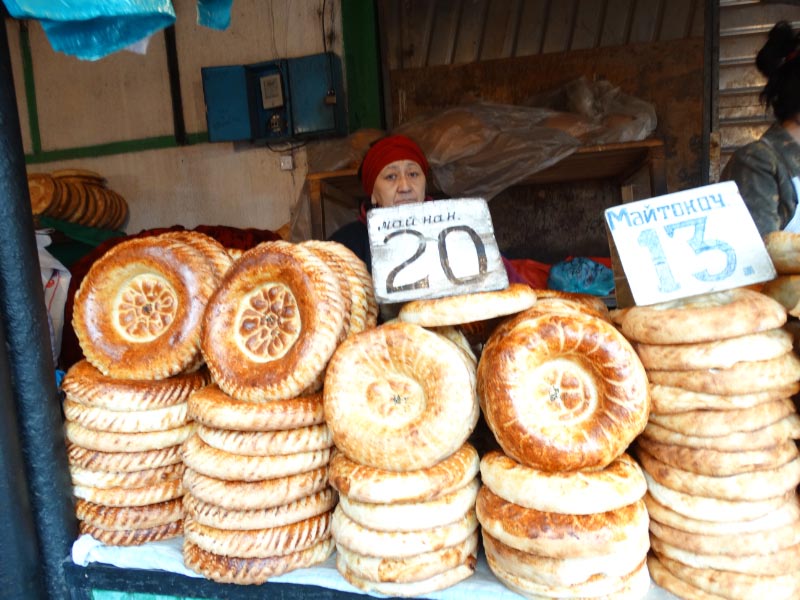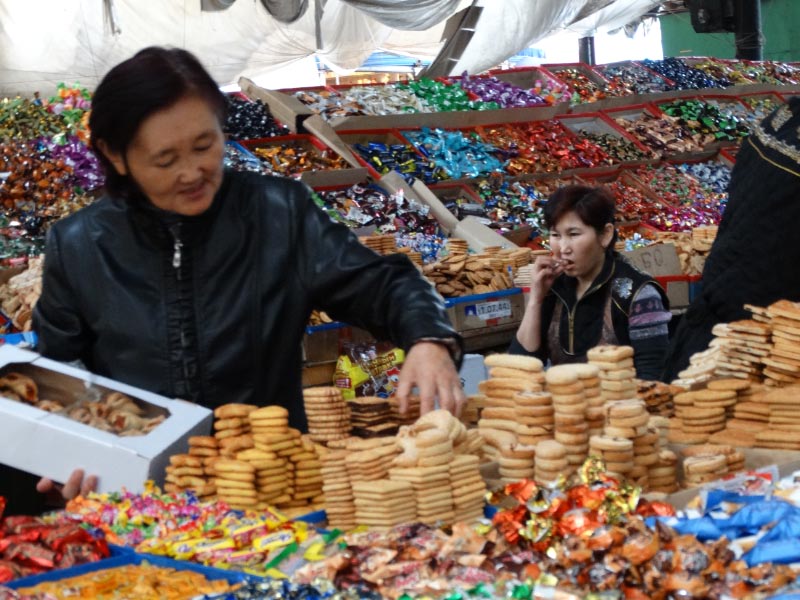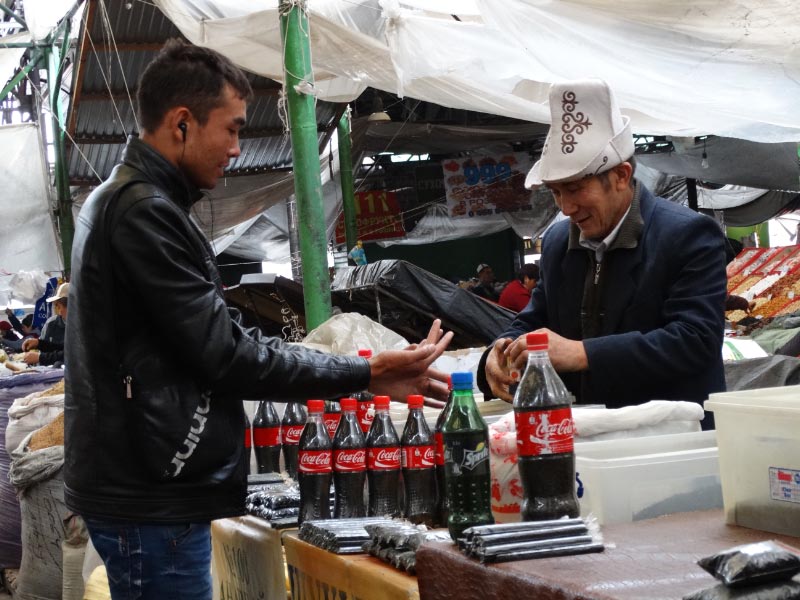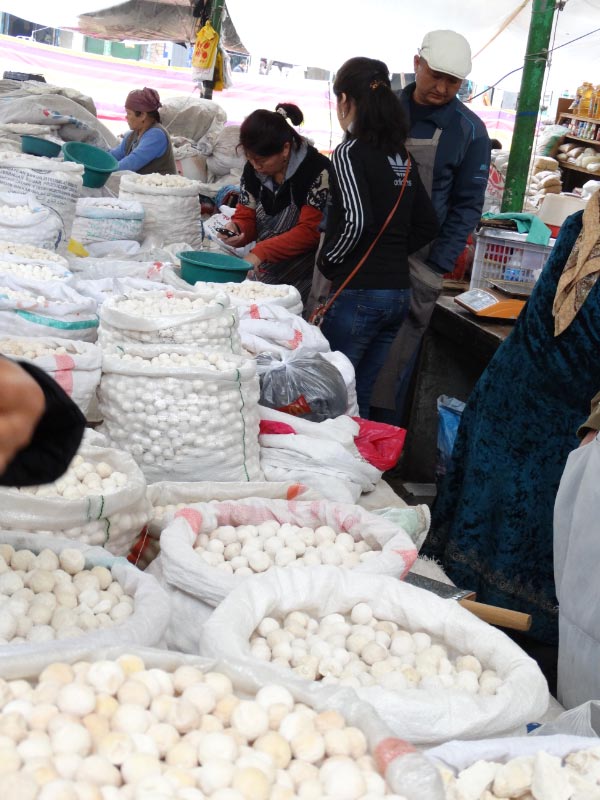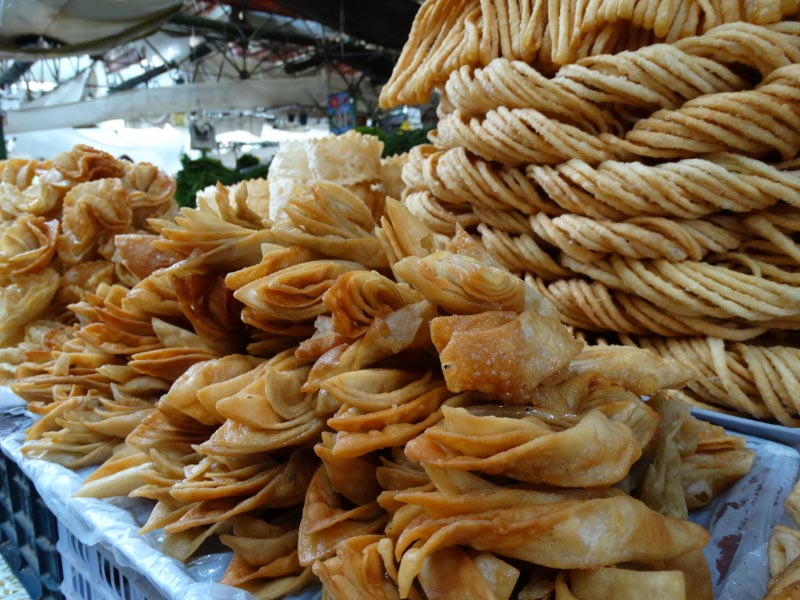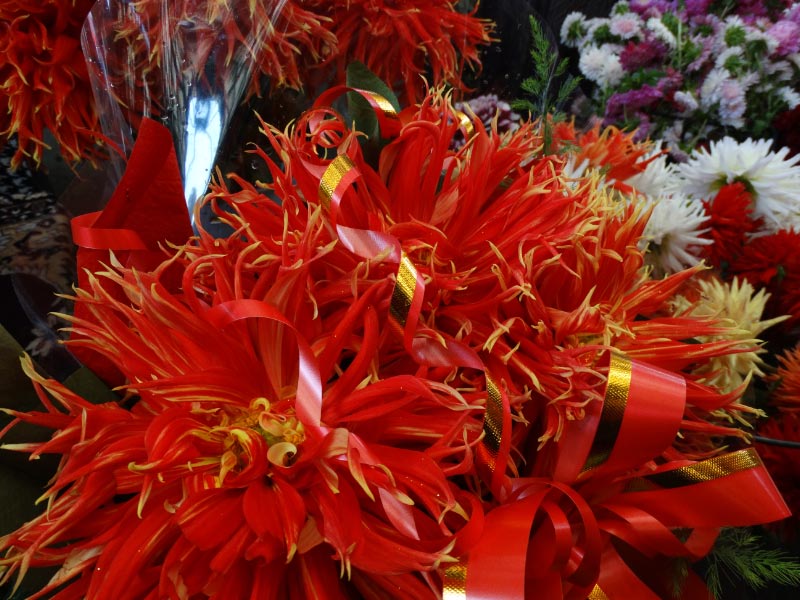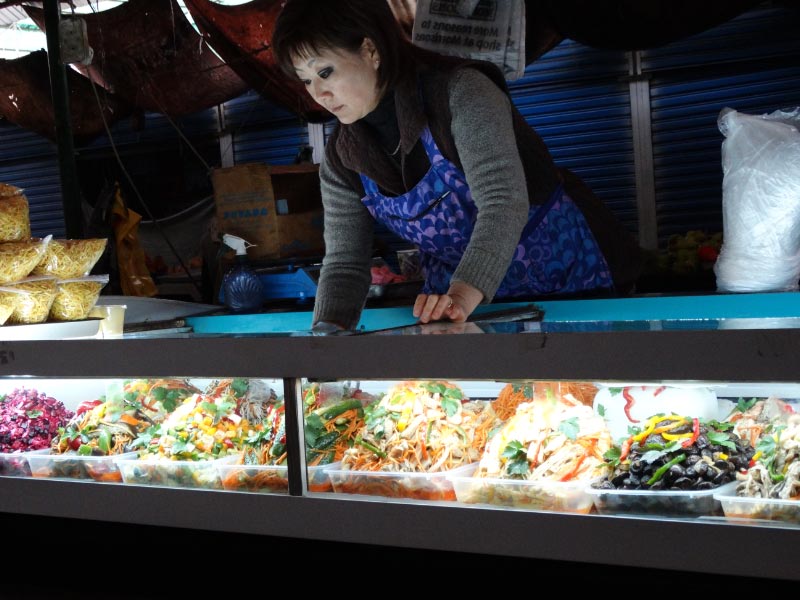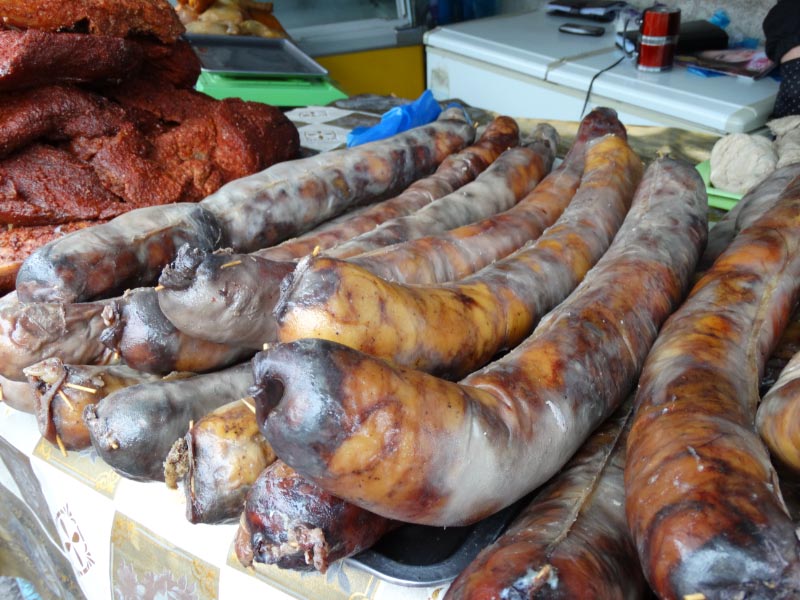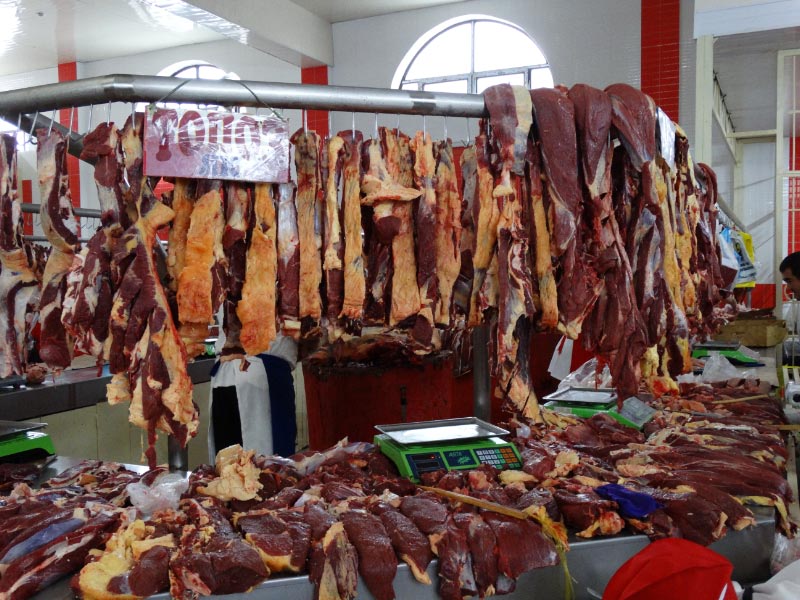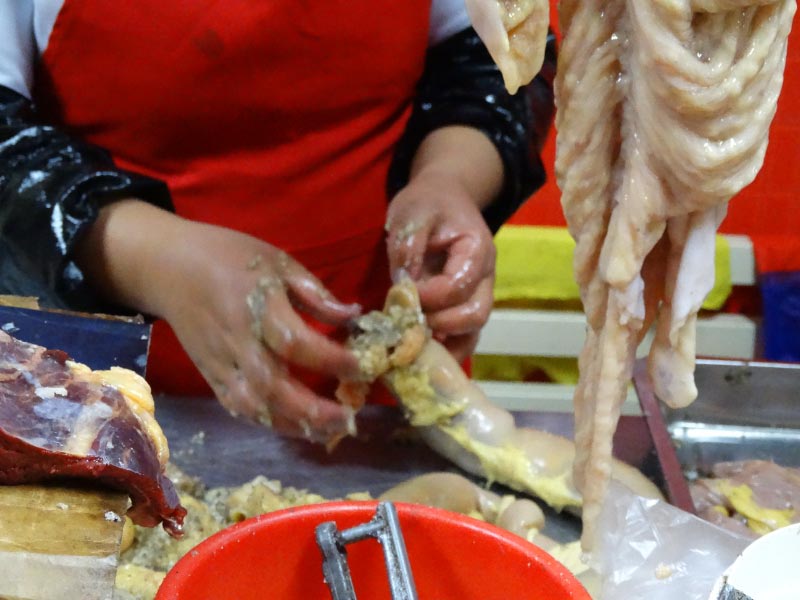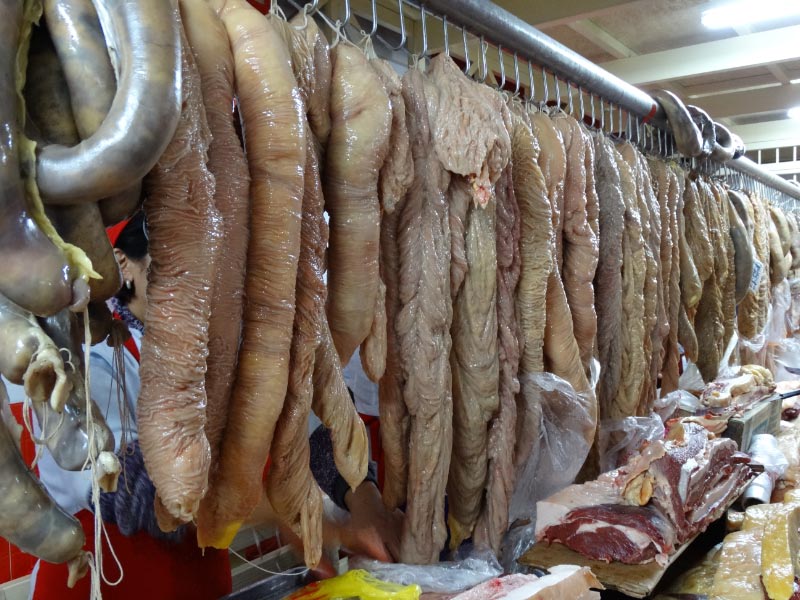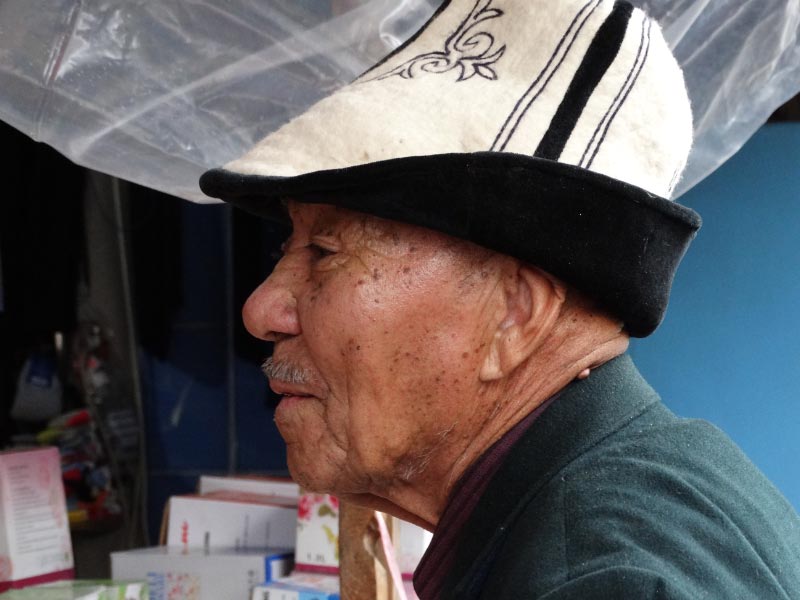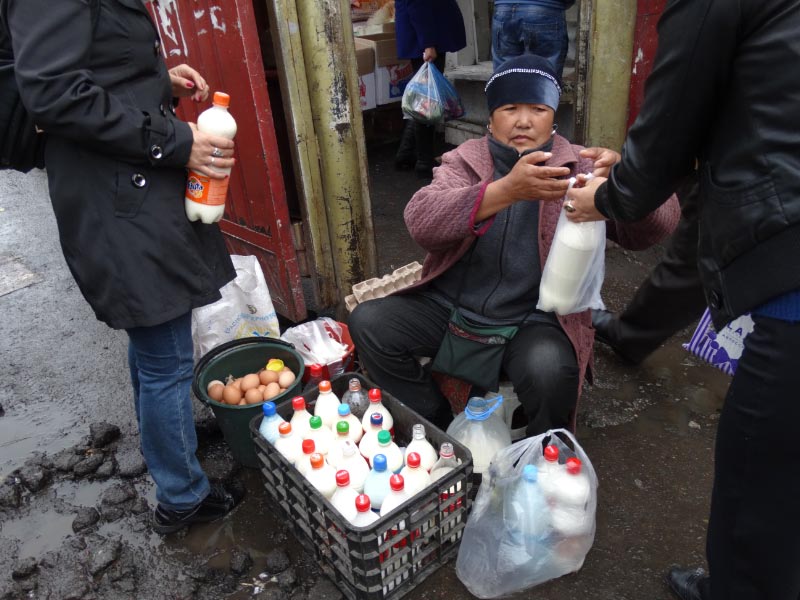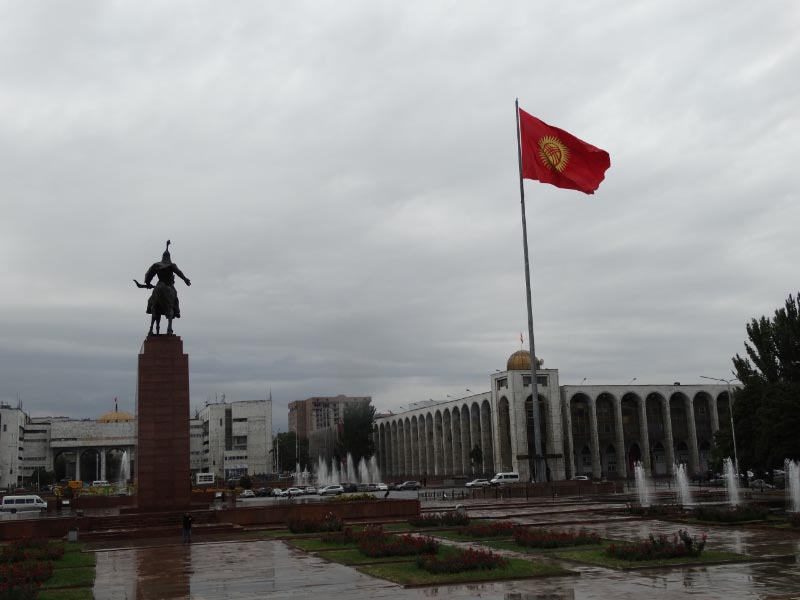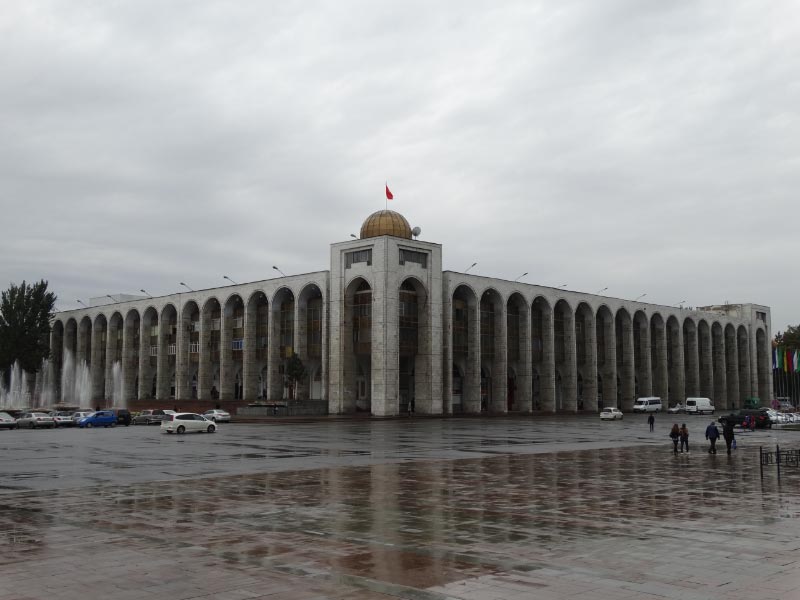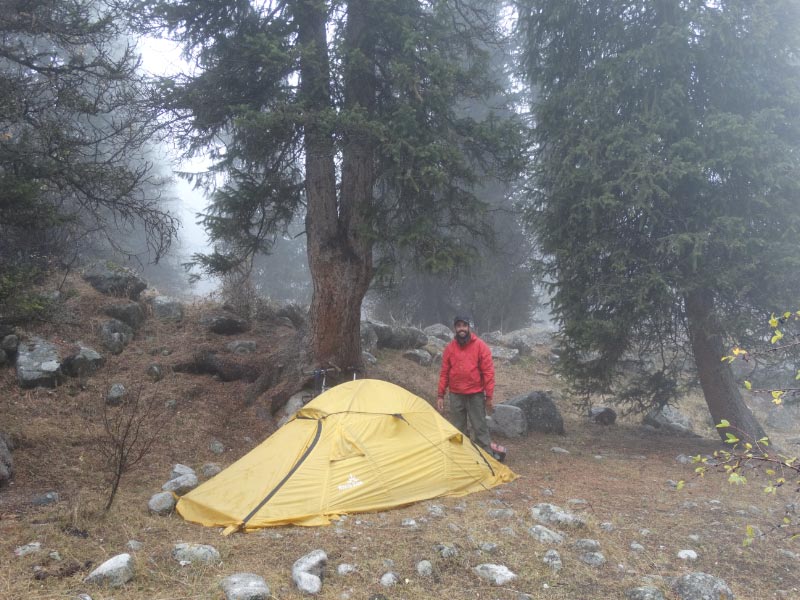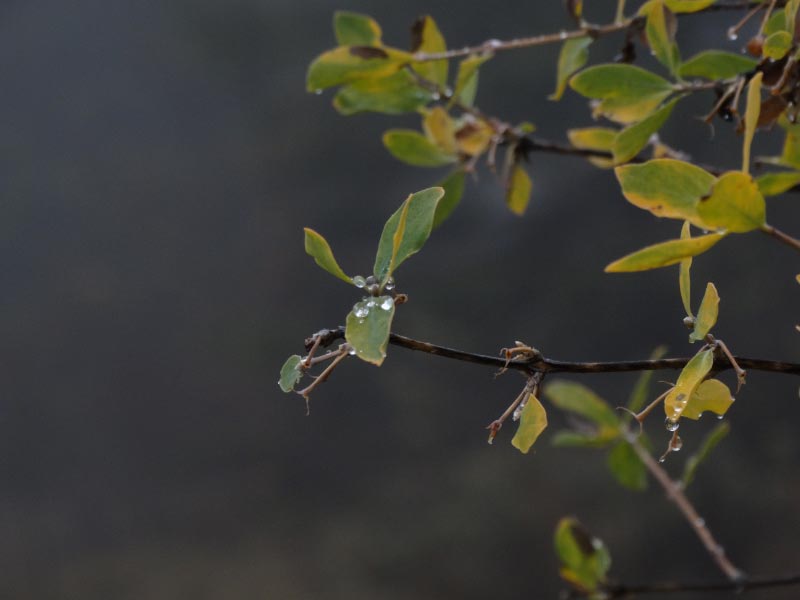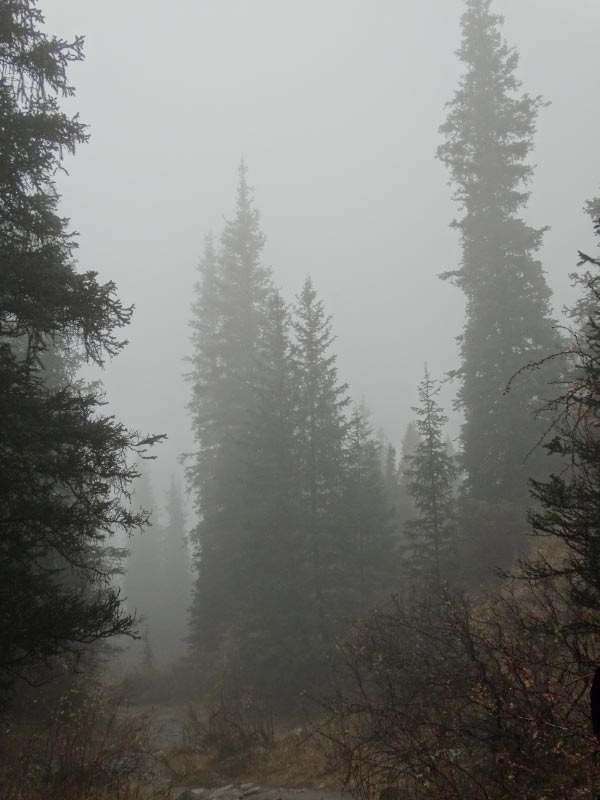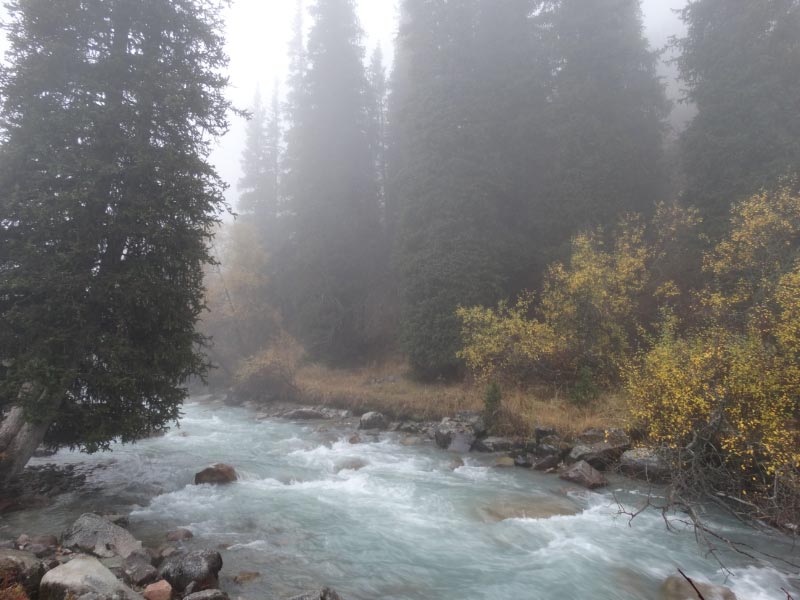Wednesday 1 to Thursday 2 October
We have travelled in three countries in four days. It is a lot to absorb.
The difference in faces, culture and food was enormous between China and Kazakhstan. Here in Kyrgyrzstan there are similarities.
We are in a smaller country, once again land locked but with a population of 5 million. The languages alternate to Kyrgyz are Russian and a little English. Business and study is mostly carried out in Russian in the cities. Kyrgys language is taught in regional schools which creates a problem for regional children who want to attend university, because they haven’t had sufficient exposure the Russian.
It was raining in Bishkek, so our guide tried to keep us indoors. Our first stop was the Osh Market. It is a melting pot for foods and goods, many destined for other places. It seems that this market is a half way point between China and the rest of Central Asia.
Dried fruits and nuts, addictive granulated tobacco leaves “nasvi”, flowers sold by the ladies who grow them (there was a bunch of beautiful red & yellow dahlias). Salads, many were spicy like kimchee and made by Korea women, which are very popular here.
We then went into the meat market. Meat was laid out on the tables and also hanging above. Meat is cut fresh daily. What is not sold today is discounted the next day. There was mutton and beef as well as yak and horse. Horse meat is a very deep red colour with a yellow fat.
A counter at the back of the market made horsemeat sausage on demand. It is such a delicacy here. The counter had horse meat and entrails on display. You can select the bits you want and they stuff the intestine casing for you. It is a gruesome, gristly sight, but we were told that it is rude not to serve your guests horsemeat sausage. Just hope we are not those guests anywhere.
We continued through the market and lingered to look at the stalls selling the Kyrgys national costume. Velvet dresses and jackets for ladies, heavily embroided. Styles for young women and the mature lady like myself. A married woman always wears a headscarf out of respect of her in-laws with whom she lives after marriage. The headscarf covers the hair and is tied in an elegant knot at the back of the head.
For men there is a white felt coat about knee length and a rather high white felt hat with a small rim upturned at the back. Both the coat and hat are embroided.
Our next stop was the museum, next to the White House (presidential offices). Since the collapse of Soviet Russia in 1991, there have been two riots. In 2005 the Tulip Revolution overthrew the first president Askar Akaev. He and his family were last seen helicoptered out to Moscow. And then in 2010 another uprising saw the demise of President Kurmanbek Bakiev, who escaped with his family to Belarus. Our guide said they are yet to determine if the current president is involved in the same corruption as his predecessors.
The museum is grandiose white marble, built during the Russian era and an ode to Russian life, leaders and heroes of war. There was also a display of implements and tools used in and around the home and farm. The craft work of weaving and embroidery was beautiful.
After a heart lunch (we got away with a tomato salad and massive dumplings called manty we went to the Ala-Archa Canyon. It was drizzling and the climb into the canyon also took us into the mist. I think the canyon had very steep mountains raising out of it, but we were lucky to see a tree 100m away.
There we met a Spaniard from Alicante who was cycling the Silk Road. He told us he had started in SE Asia and was taking his time. He had set up camp in the national park and was going to do some walking tomorrow when the rain stopped. His last words to us were “alone but not lonely”.
After a walk up the hill in the rain we called it a day.
Because of the wet day we chose to eat at the hotel. There we met Stuart an Englishman who lives in Bergen, Norway. He had ridden a Yamaha 600cc to Osh. He had had a fantastic adventure, lasting 6 weeks, and described some of the places we will visit. He wasn’t sure his adventure was over so had left his bike in Osh and intends to return next year for more. He told us there are a lot of people riding and cycling the Pamir Highway. Cyclists do it hard with long distances between food and water stops.
Makes us think what soft travellers we are.
e_header.jpg)

